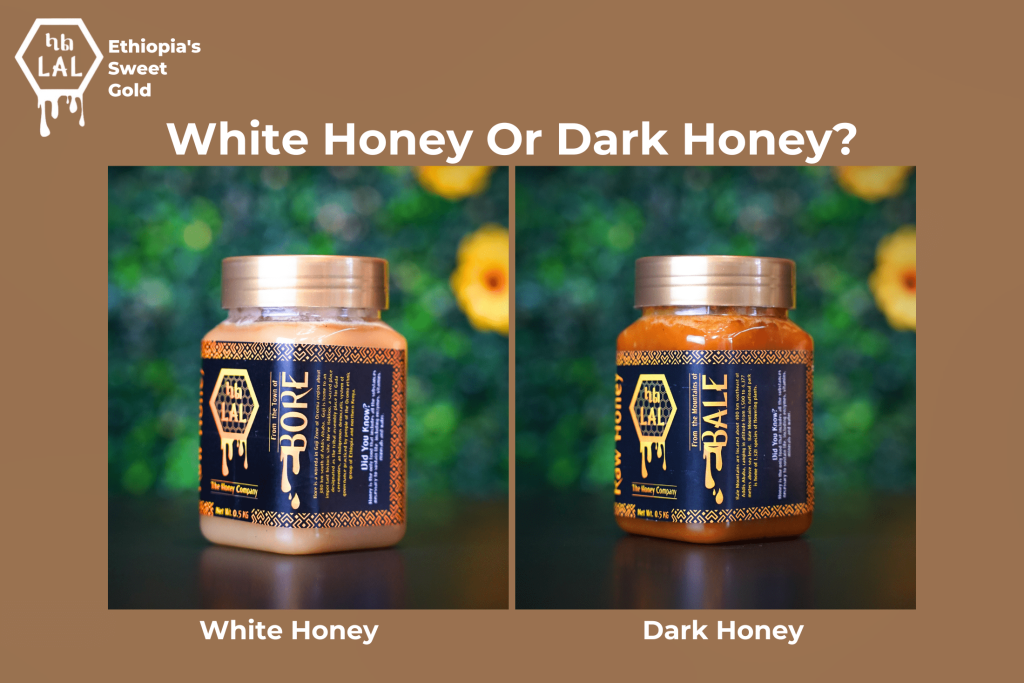
The Colorful World of Honey: Differences Between White and Dark Honey Types
Honey, a natural sweetener that has been treasured for centuries, comes in an array of beautiful colors and flavors. Among the different types, white honey and dark honey are particularly distinct and sought-after. While both offer numerous health benefits, understanding their nuances can help you appreciate the splendor of each. Let’s delve into the differences between white honey and dark honey and explore the unique benefits of each.
1. How Honey’s Color Reveals its Flavor and Origin
Honey’s color primarily stems from its floral source, which directly influences its mineral content, acidity, and even the specific types of sugars present. But that’s not all – the age, storage conditions, and even the method of processing can influence the color. For instance, older honey or honey exposed to higher temperatures might darken over time.
2. Floral Sources: The Beginning of the Journey
White Honey: Typically, white honey is harvested from the delicate blossoms of trees and plants that produce lighter nectar. Prime examples are the white locust tree and the alfalfa plant. The nectar of these flowers is not just responsible for the pale hue but also the honey’s subtle flavors.
Dark Honey: Dark honey owes its intense color to the nectar of trees and plants that produce more vibrant and richly colored nectar. Trees like buckwheat, chestnut, and certain wildflowers are common sources. The deep, varied tones of dark honey are a testament to the rich nectar of these botanical sources.
3. Flavor Profiles: A Dance of Delicate and Bold
White Honey: Light, floral, and with a whisper of sweetness, white honey offers a more understated floral taste. Its gentle nuances make it perfect for those who enjoy subtlety in their flavors.
Dark Honey: For the adventure seekers of the culinary world, dark honey is a treasure trove of flavors. Its bold, robust character can swing from malty to smoky and can even carry slightly bitter undertones.
4. Health and Honey: The Nectar’s Benefits
White Honey: Beyond its delightful taste, white honey is packed with enzymes, aiding digestion. Its antibacterial properties make it an excellent natural remedy for skin ailments, and it’s also a fantastic source of quick energy.
Dark Honey: The richer the color, the richer the benefits. Dark honey is a powerhouse of antioxidants, which are essential for combatting harmful free radicals in the body. Additionally, it’s a great source of essential minerals like zinc, magnesium, and selenium, further enhancing its health benefits.
5. Culinary Adventures with Honey
White Honey: Owing to its delicate flavor, white honey is perfect for drizzling over fruits, sweetening mild teas, and as a complement to light pastries.
Dark Honey: The full-bodied flavor of dark honey makes it a chef’s favorite in robust recipes. Think of meat glazes, rich pastries, and even some savory dishes where its character stands out.
Concluding Notes
The diverse world of honey, with its array of colors and flavors, is a testament to nature’s splendid creativity. Whether it’s the ethereal white honey or the grounded, intense dark honey, understanding their origins and benefits helps one appreciate this nectar even more. The next time you savor honey, remember the journey it undertook, from flowers to your table, and relish the narrative behind each drop.
Curious to taste the difference for yourself? Explore our exquisite Ethiopian white and dark honey varieties at Lal Honey. Experience a symphony of flavors that will truly delight your palate!

